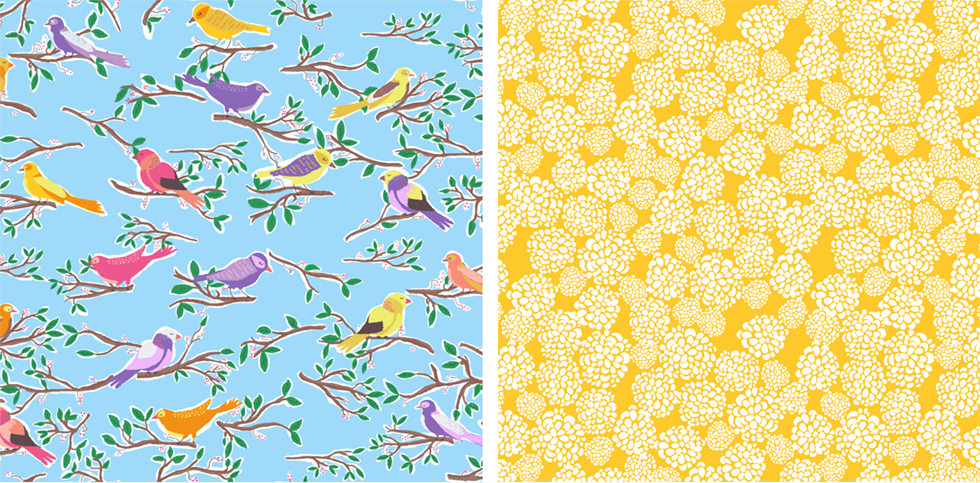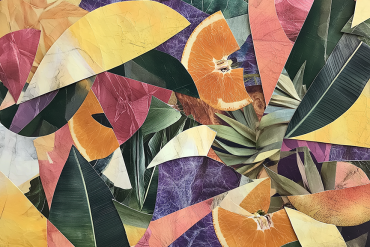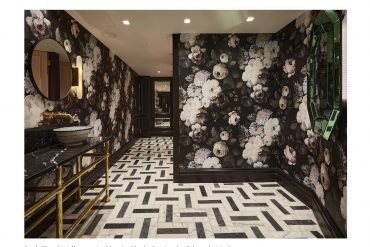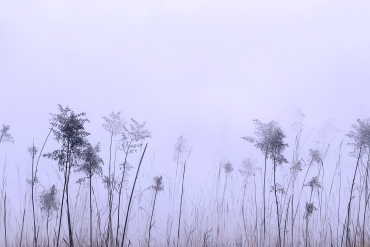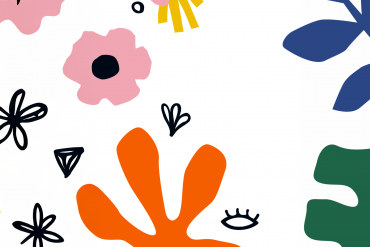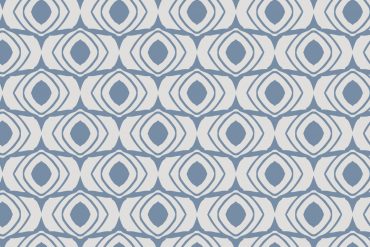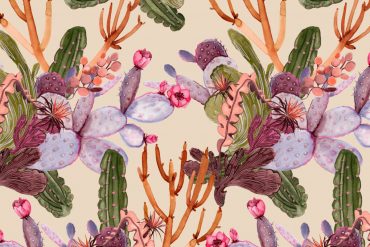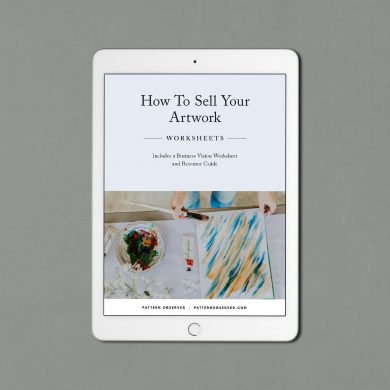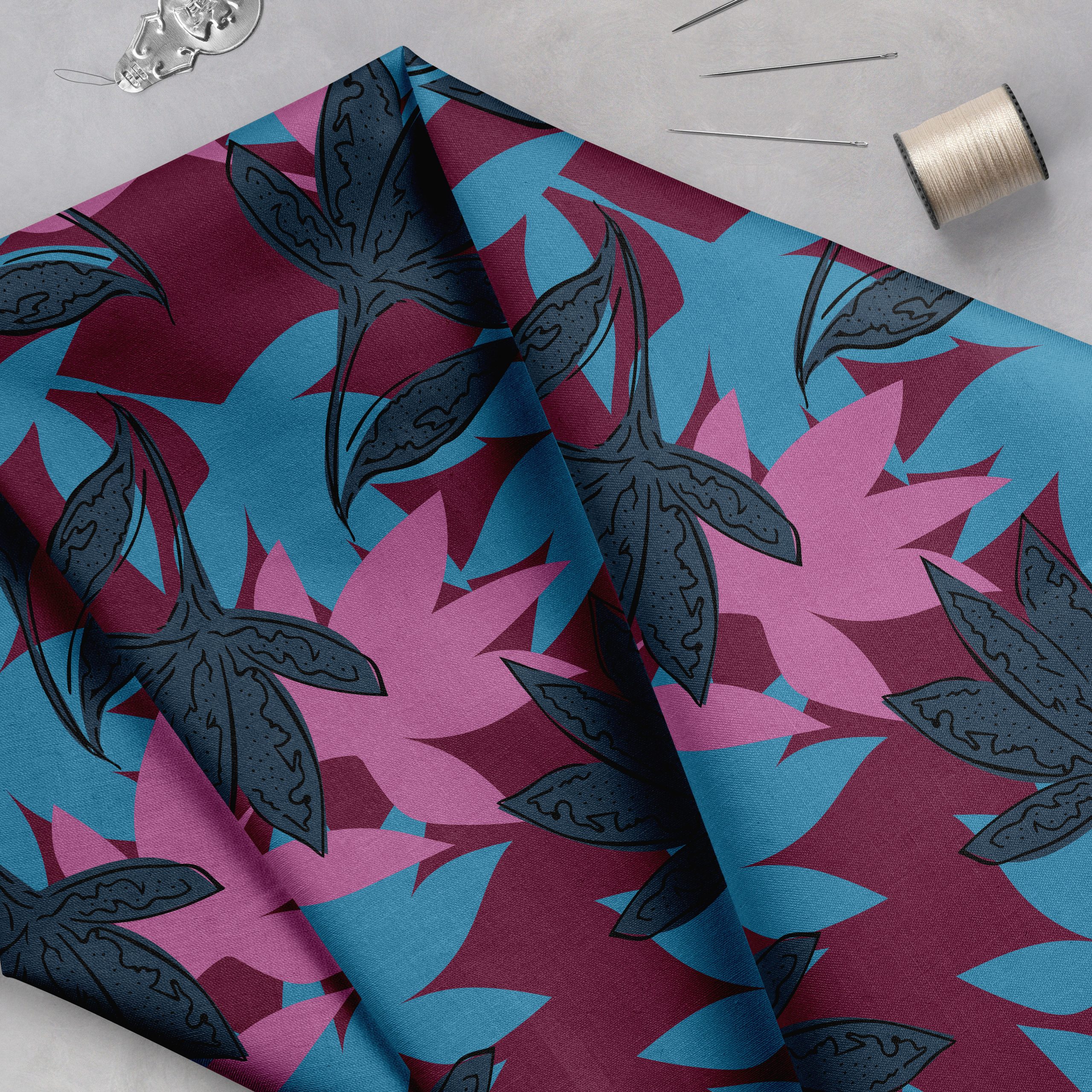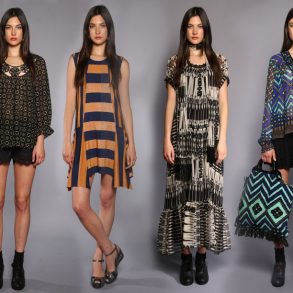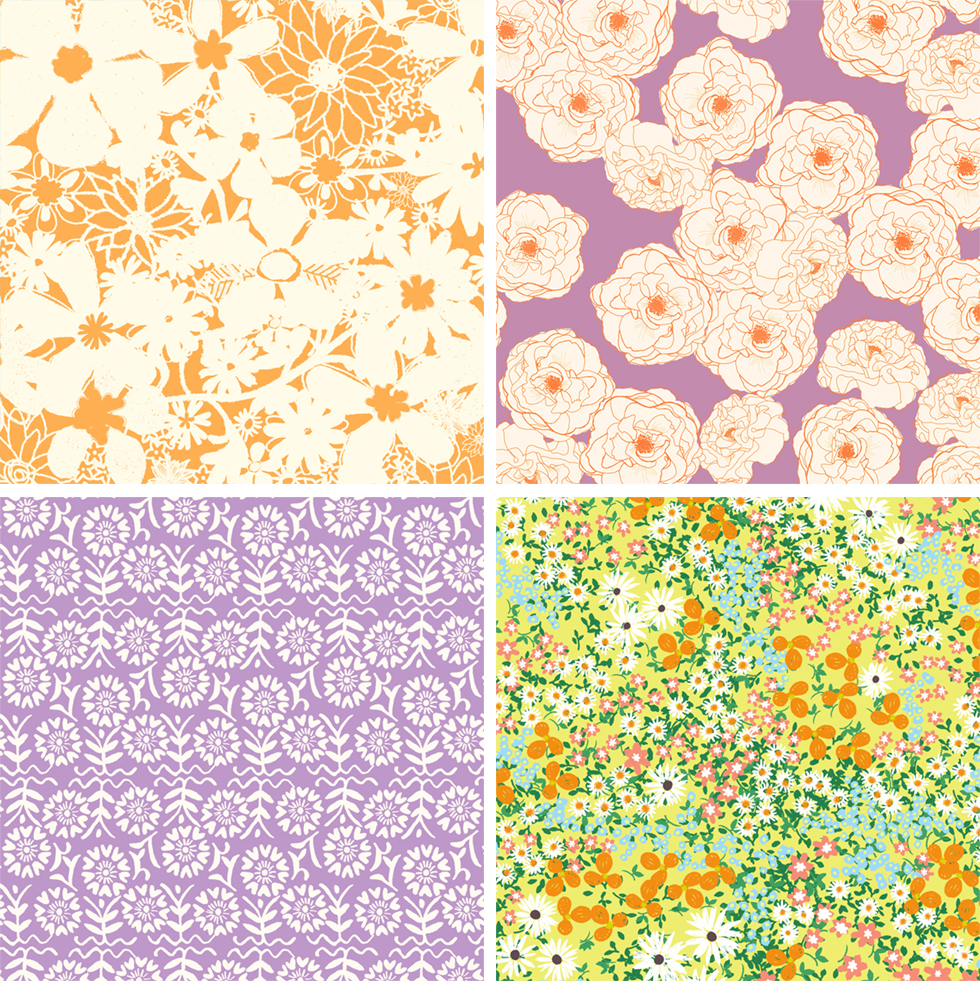
1) Tell us a bit about your experience in The Sellable Sketch. What challenges did you face before joining, and what did you take away from the course?
Before enrolling in the Pattern Observer course, I was a full time web design freelancer. I felt as though every project left me wanting more illustration and opportunity to make patterns. A friend of mine had suggested I try Spoonflower (which I fell in love with instantly!) but in order to make my fabric profitable, I needed some of the technical background, since I lacked basic fundamental knowledge about how to create a sellable and cohesive collection out of a creative idea.
After I finished the material in the course, I felt that I had a logical approach to creating a fabric collection that I could go back to on a regular basis while I continued to sharpen my illustrative skills. I have used Michelle’s lessons every time I approach a pattern, whether its for a collection, a commission, or a personal project. It’s helped me hone in my own personal aesthetic, which was no easy feat! Michelle’s logical approach to such a creative and fluid process helped me understand what it takes to make a sellable pattern.
During and after the course, I knew I needed to decide what areas of textile design I wanted to pursue. There are so many, it can be overwhelming. The idea of designing individual prints for direct sale with a studio appealed to me because of the immediate income. At the time, my husband and I were trying to decide if we would be able to afford me being a full time freelancer, and the business model of working with a studio appealed to us both. But the idea of licensing also appealed me, based on the large opportunities with amazing companies and manufacturers, who are able to put your work into a physical form. I took a few months to create work…a lot of work. I kept it all private at the time because I wanted a solid group of work to showcase to potential studios that would want to work with me. It was hard keeping so much work private for so long! I am by nature, a sharer, and I wanted to put this work on my portfolio and showcase what I was able to do, but I remained patient, as hard as it was for me. After many (many) inquiries and pitches, I was hired by two different studios that serve two completely separate markets.
2) Tell us about your inspiration or goal behind your pattern designs. What market(s) do you target with your work?
My inspiration comes mostly from nature. I grew up being creative, and being outside a lot. I love designing prints and patterns from memories that comfort us, and remind us of happy times in our lives. I guess you could say I’m inspired daily by the idea of nostalgia and what it means to an individual. My target market is mostly in home decor, but I do enjoy designing for children’s and womenswear as well! It so happens that a lot of my licensing work is done in home decor, and my studio work is done in womenswear and children’s. It allows me to have a creative outlet for all these areas which I love.
3) Could you talk a bit about your experience with licensing?
Since I love both sides of pattern making (selling outright and licensing), I continue to pursue licensing opportunities on a regular basis that are a good fit for me. Licensing is a great way to cultivate partnerships while making a royalty-based income, on art that you’ve created one time. It can be taxing to create new work all the time, and using some of my favorite pieces, I’ve been able to generate royalty over the past year while focusing on print studio work simultaneously. The reason I decided that I wanted to have a combination of both experiences, is that I feel that with these combined opportunities, I’ve made a livable income as a freelancer.
In my experience, different manufacturers and partners offer varying fee structures, and they drive the payment structure that is set up for freelancers they partner with. Some royalties take months to accrue, and its important to realize that when agreeing to partner with a licensee. This is primarily why I love working in both selling outright and licensing.
4) Tell us about your experience working with studios. Do you feel you have a lot of creative freedom or are you expected to adhere to a certain style or certain trends? How many prints do you design per week or month & how do you keep yourself on track/inspired? Do you have any words of wisdom for designers interested in having a print studio represent their work?
After having significantly more work that I was proud of, and I knew was sellable, based on what I learned in the course – I reached out to the studios and offered to share this work with them. I was genuine, honest, and open with what it was I was looking for in a studio partnership. I truly wanted to find a great fit for me as a designer.
The two studios I work with offer me a lot of creative freedom as a designer. Freelance designers are offered information about trends and the studio’s specific needs based on their collection, and we are given feedback based on quality, layout, and color of the prints we create, based on what the creative director thinks is best for the season we are designing for. It’s great exercise for my pattern-making skills! When I first started working on studio work, I felt like the amount of prints I was able to push out of my studio within a month was low. They say the more you create, the more you sell – and I wasn’t creating or selling very much at all, which was so discouraging at first! I talked to the owner at one studio who gave me some sound advice and encouragement to keep at it and just keep creating. Sales can come in slowly and grow exponentially, but it takes time to build volume within a studio and learn the market you’re selling to. Even with fundamental knowledge at my fingertips, nothing helps you grow more than real experience with real customers. Your customer in this scenario is a bit different than licensing – because in licensing, you’re selling directly to a consumer, but when working with a print studio, you’re selling to an art buyer who is representing a company and brand. It’s a bit different and it can be a harder sell because they’re often searching for something specific for the brand they represent.
Knowing that each print I make brings more financial support for my business, and more opportunity to learn about the customer, this helps me stay on track. I view my work with the studios and licensing partnerships the same way I view a 9-5 job – vital to my professional success and personal financial goals. Working from home (at least in the beginning) can be a roadblock in staying motivated, but I take great pride in working from my studio at home. In a month, I create anywhere from 25-85 prints. This sounds like a large range, but its adjusted each month based on specific trends that are occurring and licensing opportunities that I’m nurturing at the same time.
5) What do you feel is the hardest part of creating a successful collection of prints? Where do you feel designers tend to stumble?
As time has passed, I’ve noticed a natural trend in focusing more on quality than quantity. Five showstopper prints in a collection will sell far better than three subpar collections, and it took a long time for that to click in my head. I think some designers do tend to think that quantity is important (which it is!) but quality is much more important than you think.
6) Do you have any advice to incoming students?
Be a sponge! The course is an incredible way to learn about the industry, even if you are seasoned with years of experience! There is so much material in the Pattern Observer courses, I went back and reviewed some of the content from various sections twice, even three times. It will help you go back to your fundamentals and cultivate a proven way to create sellable collections that will provide a foundation for years of opportunities.
To see more, visit Joy’s website, connect with her via Facebook, Twitter, or check out her beautifully curated Pinterest boards.
The Sellable Sketch Group Study begins this coming Monday, July 28th in The Textile Design Lab. In this course you will bring clarity and focus to your collection development process and discover a systematic way of working season after season. The group study comes with some great bonuses like 2 months of access to Stylesight and a series of inspirational and informative emails to keep you motivated! Learn more and register for your spot here.

